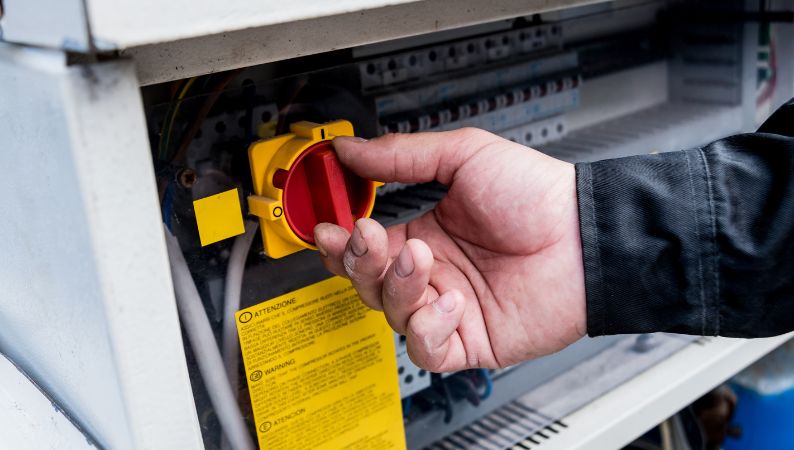Coolixa offers the best installation and maintenance services in Mumbai, Maharashtra, and India. Our maintenance services are meant to find and fix potential issues with the system before they become problematic. This proactive method reduces downtime so our customers can enjoy uninterrupted comfort inside their living or working spaces.
Let's take a deep look at HVAC control and safety in this blog post so that you can understand how important they are in the workplace. It is very important to understand the details of HVAC control and security and how they affect day-to-day activities. This blog will explain why these factors are essential in HVAC systems and how putting them into good practice ensures their proper functioning and the health of the people who live or work in the building.
Advantages of HVAC Control and safety system
HVAC (heating, ventilation, and air conditioning) systems are Not replaceable for home comfort, and it's very important to make sure they work well and safely. Using high-tech safety and HVAC systems has many benefits. Let's look at the advantages of having a significant safety and control system for your HVAC system.
- Enhanced Energy Efficiency
- Heating, ventilation, and air conditioning (HVAC) control systems allow for accurate temperature, ventilation, and humidity adjustment, which helps reduce needless use of energy. Intelligent automation features improve system efficiency by adjusting to shifting environmental conditions, ultimately resulting in cost savings in energy use.
- Cost Savings
- Control systems that adjust HVAC operations lead to lower energy bills, contributing to cost savings over the long term. Safety systems, such as fault detection and testing, assist in the early identification of problems, eliminating the need for expensive breakdowns and reducing the amount of money spent on repairs.
- Occupant Safety
- Safety systems for heating, ventilation, and air conditioning (HVAC) put the health and safety of occupants first by incorporating precautions such as emergency shutdown processes. It guarantees prompt reactions to possible hazards, reducing the risks connected with functional failures of the system.
- Gas Leak Detection
- Detecting gas leaks at an early stage is an essential safety element that helps prevent potential problems in areas that use flammable fuels. As a result of this feature, the residents and the property are protected from the dangers linked with gas leaks.
- Continuous Monitoring
- Safety systems continuously monitor the HVAC operations, so any deviations from regular procedures are quickly handled. Through this constant awareness, the danger of safety hazards caused by devices that fail is significantly reduced.
- Integration with Building Security
- Integration with building security systems enhances overall safety. Coordinated responses to security incidents, such as controlling ventilation during a security breach, contribute to a comprehensive approach to building safety.
The Importance of Safety In HVAC
Safety is important to HVAC systems because it protects people and property. The job of HVAC systems is to keep the air quality inside of homes at its best. If safety steps aren't taken, pollutants, allergens, or even harmful gases could build up. Without the proper safety features, these things could put people's health at risk, emphasizing the importance of robust safety protocols.
If safety measures aren't taken, there is a chance of fire or explosion in HVAC systems that use fuels that can catch fire. Implementing safety measures such as gas leak detection, emergency shutoff protocols, and efficient ventilation systems is crucial to avert these potentially disastrous occurrences. By finding and fixing these dangers right away, these safety measures keep the people inside the structure safe and its foundation strong.
Furthermore, compliance with safety standards and regulations is not only a requirement under the law but also an essential component of developing responsible building management practices. Following these rules ensures that HVAC systems work within certain safety limits, lowering the risk of collapses and the chance of legal problems. Integrating safety features also contributes to effective emergency response planning, allowing quick and coordinated actions in critical situations.
The Role Of AHU In Fire Safety
AHU stands for "Air Handling Unit" in terms of fire safety. The Air Handling Unit moves and controls the air inside a building and is an integral part of HVAC systems. The AHU is very important regarding fire safety because it stops smoke and fire from spreading.
- Smoke Control
- In the instance of a fire, AHUs are equipped with filters and controls that can be set up to stop the flow of smoke throughout a building. It helps keep the smoke in the affected area, speeding up the escape process and lowering the risk of harm to people still there.
- Pressurization
- AHUs can make air differences between zones in fire safety systems. By applying pressure to certain areas, smoke can be stopped from spreading. Create an evacuation route and provide more apparent paths for occupants to exit the building safely.
- Fire Stoppers
- Fire sprinklers built into AHUs are often meant to close themselves if there is a fire. Fire and smoke can't spread through HVAC ducts because of these dampers. They help keep the fire in the area where it started.
- Shutdown Protocols
- Protocols for turning AHUs off or changing their operation in reaction to a fire alert may be a part of an advanced fire protection system. This preventative step lowers the likelihood that the HVAC system will help spread fire or smoke.
- Integration with Building Management Systems (BMS)
- There is a common practice of combining AHUs into larger Building Management systems. Fire safety procedures can be better implemented as a whole because of this integration, which enables coordinated responses, including turning off air handling units (AHUs), activating dampers, and changing pressurization.
- Compliance with Codes and Standards
- All air handling units (AHUs) used for fire protection have to be built in accordance with current building rules and standards. Compliance makes sure that these units meet the standards for protecting life and property and form a component of a larger fire safety plan.
Essential Parts of HVAC Control Systems
An HVAC control system is a technologically advanced way to handle and control how Heating, Ventilation, and Air Conditioning (HVAC) systems work. This system has sensors that measure the environment, a controller that processes the data and makes choices, and actuators that change HVAC parts based on what the controller tells them to do. In simpler terms, it's a smart system that controls temperature, humidity, and air quality in homes, businesses, and factories to make sure people are as comfortable as possible inside.

For an efficient and effective operation of HVAC, also known as (Heating, Ventilation, and Air Conditioning), the control systems are considered essential. Read more to know about the three three main components of an HVAC control system:
- Sensors
- Sensors are devices that measure a variety of factors within the heating, ventilation, and air conditioning systems, as well as the environment around them. Temperature sensors, humidity sensors, pressure sensors, and occupancy sensors are all examples of sensor types that are commonly used. The control system uses the information from these monitors to figure out the activity going on and make changes as needed.
- Controller
- The controller is the central processing unit of the HVAC system. It processes the information that is received from the sensors. Then, it makes judgments regarding how the heating, ventilation, and air conditioning system should operate in order to maintain the climate that is intended. The controller can be a simple thermostat in a residential setting or a more sophisticated building automation system (BAS) in commercial applications.
- Actuators
- Actuators are machines that receive commands from the controller and change the way HVAC parts work by doing real things. A few examples of actuators that are often used in HVAC systems are mechanical damping devices, controls, and variable frequency drives (VFDs). The controller instructs them to regulate the flow of refrigerant, water, or air, and these components react by adjusting the surrounding environment's temperature and humidity.
Why Choose Us?
We at Coolixa, in Mumbai, Maharashtra, India, consider the HVAC service company you can trust for all your needs. When you choose Coolixa, you're choosing excellence, dependability, and the best indoor comfort possible. Have a look at these reasons why you should think about us for any HVAC job:
- Expertise and Experience
- When it comes to expertise, Coolixa provides an extensive range of skills as well as years of experience. We ensure that your installations and maintenance are performed with accuracy and knowledge by employing our skilled professionals who are well-versed in the complexities of heating, ventilation, and air conditioning (HVAC) systems.
- Comprehensive Services
- Maintenance and installation of systems are among the services we provide in Mumbai, Thane, Navi Mumbai, and all other major stations in Maharashtra, India. You can rely on Coolixa to provide you with a comprehensive solution, regardless of whether you want to improve the effectiveness of your current system or need a new installation.
- Focus on HVAC Control and Safety
- Our constant dedication to the control and safety of HVAC systems sets Coolixa apart from the competition. We are aware of The importance of maintaining exact control over temperature, ventilation, and air quality. Our systems are designed with safety elements that go above and above the norms set by the industry, meaning that they guarantee a safe and comfortable indoor environment.
- Advanced Technological Methods
- Coolixa always stays on top of the latest developments in HVAC technology. Our installations use cutting-edge technology, like intelligent controls and safety features, to provide the most accurate heating, cooling, and ventilation options.
"Call us today – we're here for all your HVAC needs, from installation to maintenance. As the top service providers in Mumbai, Maharashtra, India, we assure solutions that prioritize your comfort, well-being, and peace of mind. Choose Coolixa, where our unmatched service goes beyond the ordinary, establishing us as your trusted partner in HVAC care."


